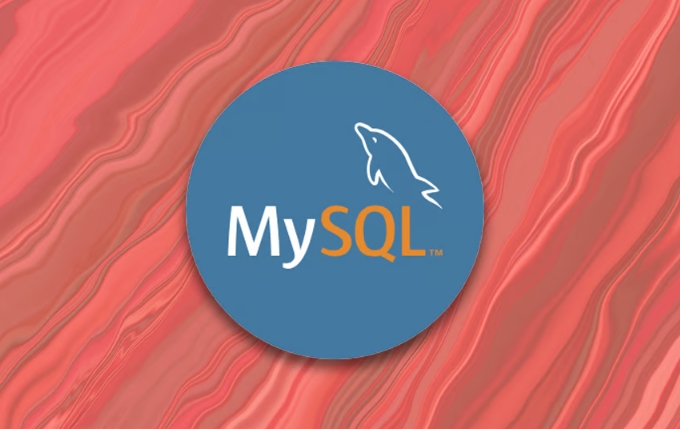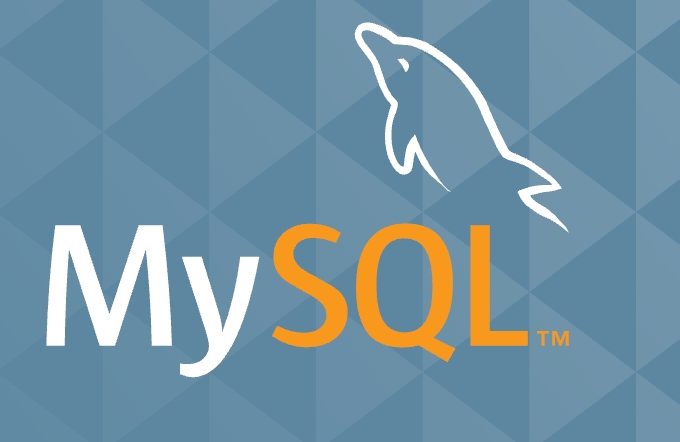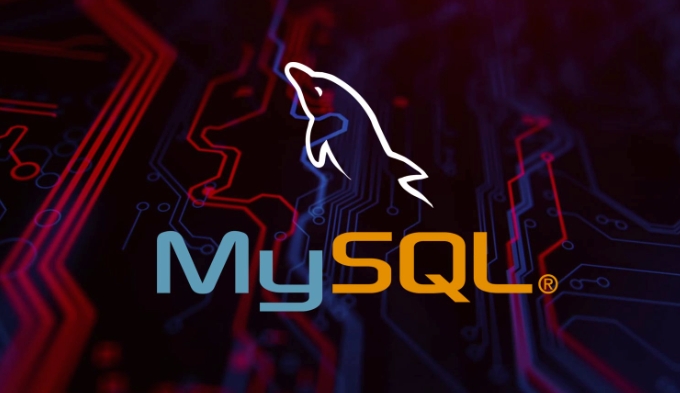How to upgrade a MySQL server to a newer version?
Aug 03, 2025 am 09:04 AMCheck compatibility with OS, applications, and features; 2. Back up all data, configs, and logs; 3. Choose upgrade method (package manager, MySQL Installer, or manual); 4. Run post-upgrade checks and tests; 5. Resolve issues like authentication plugins or deprecated options. Always back up, test first, and follow official release notes to avoid downtime.

Upgrading a MySQL server to a newer version requires careful planning to avoid data loss or downtime. Here’s a practical guide to help you do it safely and effectively.

1. Check Compatibility and Requirements
Before upgrading, make sure the target MySQL version is compatible with your current setup:
- Operating system: Confirm the new MySQL version supports your OS.
-
Application compatibility: Some applications may not work with newer MySQL versions due to deprecated features (e.g., removal of the
mysqlcommand-line tool in some distributions, changes in default authentication plugins likecaching_sha2_password). - Storage engines and features: Verify that any features or engines you rely on (like InnoDB, MyISAM, or replication settings) are still supported.
? Tip: Review the MySQL official documentation for "added, deprecated, or removed features" in the version you're targeting.

2. Backup Your Data (Essential!)
Always create a full backup before starting:
mysqldump -u root -p --all-databases --single-transaction > full_backup.sql
Also, back up:

- Configuration files (
my.cnformy.ini) - SSL certificates and keys
- Binary logs (if using replication)
Store backups in a secure, separate location.
3. Choose the Right Upgrade Method
The method depends on your OS and how MySQL was installed.
On Linux (using package manager)
If you're using a supported distribution (e.g., Ubuntu, CentOS, RHEL):
For minor version upgrades (e.g., 8.0.28 → 8.0.34):
sudo apt update && sudo apt upgrade mysql-server # Debian/Ubuntu sudo yum update mysql-server # CentOS/RHEL (older) sudo dnf update mysql-server # RHEL/Fedora (newer)
For major version upgrades (e.g., 5.7 → 8.0):
- You often need to enable a new repository or use the MySQL APT/YUM repository.
- Example for Ubuntu:
- Download and install the MySQL APT config package from Oracle.
- Select the target version in the configuration tool.
- Run:
sudo apt update sudo apt install mysql-server
- The installer will guide you through the upgrade process.
On Windows
- Use the MySQL Installer for Windows.
- Launch it and choose "Upgrade MySQL" — it detects current installations and offers available updates.
- Follow the wizard; it handles service shutdown, file replacement, and post-upgrade tasks.
Manual Upgrade (from binaries or tarballs)
Only recommended for advanced users:
- Stop the MySQL server.
- Replace binaries with the new version.
- Ensure data directory permissions are correct.
- Start the server and run
mysql_upgrade(deprecated in 8.0.16 , replaced by automatic checks).
4. Run Post-Upgrade Tasks
After the upgrade completes:
Check the error log for warnings or errors.
Verify the version:
SELECT VERSION();
Update system tables (if needed — usually automatic in MySQL 8.0 ).
Re-run mysql_upgrade equivalent tasks:
- In MySQL 8.0 , the server checks and upgrades system tables automatically on startup.
- If you see messages about tables needing repair, run:
mysqlcheck -u root -p --auto-repair --check-upgrade --all-databases
Test your applications:
- Ensure apps can connect.
- Watch for authentication issues (e.g., old clients failing due to
caching_sha2_password). - Adjust
default_authentication_plugininmy.cnfif needed.
5. Handle Common Issues
Authentication plugin errors:
- If apps can’t log in, consider altering the user:
ALTER USER 'username'@'localhost' IDENTIFIED WITH mysql_native_password BY 'password';
- Or configure the server to use
mysql_native_passwordas default (not recommended long-term).
- If apps can’t log in, consider altering the user:
Deprecated options in my.cnf:
- Remove or replace outdated configuration directives (e.g.,
query_cache_typeis deprecated in 8.0).
- Remove or replace outdated configuration directives (e.g.,
Replication breakage:
- Upgrade slaves before the master if possible.
- Check replication threads after upgrade:
SHOW SLAVE STATUS\G
Basically, upgrade carefully, back up everything, test in a staging environment first if possible, and always read the release notes. The process isn’t overly complex, but skipping steps can lead to downtime.
The above is the detailed content of How to upgrade a MySQL server to a newer version?. For more information, please follow other related articles on the PHP Chinese website!

Hot AI Tools

Undress AI Tool
Undress images for free

Undresser.AI Undress
AI-powered app for creating realistic nude photos

AI Clothes Remover
Online AI tool for removing clothes from photos.

Clothoff.io
AI clothes remover

Video Face Swap
Swap faces in any video effortlessly with our completely free AI face swap tool!

Hot Article

Hot Tools

Notepad++7.3.1
Easy-to-use and free code editor

SublimeText3 Chinese version
Chinese version, very easy to use

Zend Studio 13.0.1
Powerful PHP integrated development environment

Dreamweaver CS6
Visual web development tools

SublimeText3 Mac version
God-level code editing software (SublimeText3)
 How to use PHP to develop a Q&A community platform Detailed explanation of PHP interactive community monetization model
Jul 23, 2025 pm 07:21 PM
How to use PHP to develop a Q&A community platform Detailed explanation of PHP interactive community monetization model
Jul 23, 2025 pm 07:21 PM
1. The first choice for the Laravel MySQL Vue/React combination in the PHP development question and answer community is the first choice for Laravel MySQL Vue/React combination, due to its maturity in the ecosystem and high development efficiency; 2. High performance requires dependence on cache (Redis), database optimization, CDN and asynchronous queues; 3. Security must be done with input filtering, CSRF protection, HTTPS, password encryption and permission control; 4. Money optional advertising, member subscription, rewards, commissions, knowledge payment and other models, the core is to match community tone and user needs.
 Automating MySQL Deployments with Infrastructure as Code
Jul 20, 2025 am 01:49 AM
Automating MySQL Deployments with Infrastructure as Code
Jul 20, 2025 am 01:49 AM
To achieve MySQL deployment automation, the key is to use Terraform to define resources, Ansible management configuration, Git for version control, and strengthen security and permission management. 1. Use Terraform to define MySQL instances, such as the version, type, access control and other resource attributes of AWSRDS; 2. Use AnsiblePlaybook to realize detailed configurations such as database user creation, permission settings, etc.; 3. All configuration files are included in Git management, support change tracking and collaborative development; 4. Avoid hard-coded sensitive information, use Vault or AnsibleVault to manage passwords, and set access control and minimum permission principles.
 How to set environment variables in PHP environment Description of adding PHP running environment variables
Jul 25, 2025 pm 08:33 PM
How to set environment variables in PHP environment Description of adding PHP running environment variables
Jul 25, 2025 pm 08:33 PM
There are three main ways to set environment variables in PHP: 1. Global configuration through php.ini; 2. Passed through a web server (such as SetEnv of Apache or fastcgi_param of Nginx); 3. Use putenv() function in PHP scripts. Among them, php.ini is suitable for global and infrequently changing configurations, web server configuration is suitable for scenarios that need to be isolated, and putenv() is suitable for temporary variables. Persistence policies include configuration files (such as php.ini or web server configuration), .env files are loaded with dotenv library, and dynamic injection of variables in CI/CD processes. Security management sensitive information should be avoided hard-coded, and it is recommended to use.en
 How to use PHP to develop product recommendation module PHP recommendation algorithm and user behavior analysis
Jul 23, 2025 pm 07:00 PM
How to use PHP to develop product recommendation module PHP recommendation algorithm and user behavior analysis
Jul 23, 2025 pm 07:00 PM
To collect user behavior data, you need to record browsing, search, purchase and other information into the database through PHP, and clean and analyze it to explore interest preferences; 2. The selection of recommendation algorithms should be determined based on data characteristics: based on content, collaborative filtering, rules or mixed recommendations; 3. Collaborative filtering can be implemented in PHP to calculate user cosine similarity, select K nearest neighbors, weighted prediction scores and recommend high-scoring products; 4. Performance evaluation uses accuracy, recall, F1 value and CTR, conversion rate and verify the effect through A/B tests; 5. Cold start problems can be alleviated through product attributes, user registration information, popular recommendations and expert evaluations; 6. Performance optimization methods include cached recommendation results, asynchronous processing, distributed computing and SQL query optimization, thereby improving recommendation efficiency and user experience.
 mysql revoke privileges from user
Jul 16, 2025 am 03:56 AM
mysql revoke privileges from user
Jul 16, 2025 am 03:56 AM
To recycle MySQL user permissions using REVOKE, you need to specify the permission type, database, and user by format. 1. Use REVOKEALLPRIVILEGES, GRANTOPTIONFROM'username'@'hostname'; 2. Use REVOKEALLPRIVILEGESONmydb.FROM'username'@'hostname'; 3. Use REVOKEALLPRIVILEGESONmydb.FROM'username'@'hostname'; 3. Use REVOKE permission type ON.*FROM'username'@'hostname'; Note that after execution, it is recommended to refresh the permissions. The scope of the permissions must be consistent with the authorization time, and non-existent permissions cannot be recycled.
 Securing MySQL Connections with SSL/TLS Encryption
Jul 21, 2025 am 02:08 AM
Securing MySQL Connections with SSL/TLS Encryption
Jul 21, 2025 am 02:08 AM
Why do I need SSL/TLS encryption MySQL connection? Because unencrypted connections may cause sensitive data to be intercepted, enabling SSL/TLS can prevent man-in-the-middle attacks and meet compliance requirements; 2. How to configure SSL/TLS for MySQL? You need to generate a certificate and a private key, modify the configuration file to specify the ssl-ca, ssl-cert and ssl-key paths and restart the service; 3. How to force SSL when the client connects? Implemented by specifying REQUIRESSL or REQUIREX509 when creating a user; 4. Details that are easily overlooked in SSL configuration include certificate path permissions, certificate expiration issues, and client configuration requirements.
 How to build an online customer service robot with PHP. PHP intelligent customer service implementation technology
Jul 25, 2025 pm 06:57 PM
How to build an online customer service robot with PHP. PHP intelligent customer service implementation technology
Jul 25, 2025 pm 06:57 PM
PHP plays the role of connector and brain center in intelligent customer service, responsible for connecting front-end input, database storage and external AI services; 2. When implementing it, it is necessary to build a multi-layer architecture: the front-end receives user messages, the PHP back-end preprocesses and routes requests, first matches the local knowledge base, and misses, call external AI services such as OpenAI or Dialogflow to obtain intelligent reply; 3. Session management is written to MySQL and other databases by PHP to ensure context continuity; 4. Integrated AI services need to use Guzzle to send HTTP requests, safely store APIKeys, and do a good job of error handling and response analysis; 5. Database design must include sessions, messages, knowledge bases, and user tables, reasonably build indexes, ensure security and performance, and support robot memory
 How to develop AI intelligent form system with PHP PHP intelligent form design and analysis
Jul 25, 2025 pm 05:54 PM
How to develop AI intelligent form system with PHP PHP intelligent form design and analysis
Jul 25, 2025 pm 05:54 PM
When choosing a suitable PHP framework, you need to consider comprehensively according to project needs: Laravel is suitable for rapid development and provides EloquentORM and Blade template engines, which are convenient for database operation and dynamic form rendering; Symfony is more flexible and suitable for complex systems; CodeIgniter is lightweight and suitable for simple applications with high performance requirements. 2. To ensure the accuracy of AI models, we need to start with high-quality data training, reasonable selection of evaluation indicators (such as accuracy, recall, F1 value), regular performance evaluation and model tuning, and ensure code quality through unit testing and integration testing, while continuously monitoring the input data to prevent data drift. 3. Many measures are required to protect user privacy: encrypt and store sensitive data (such as AES






